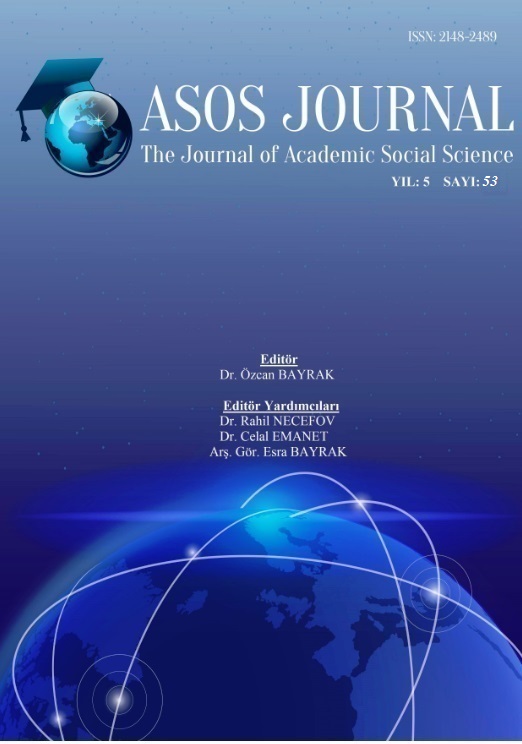Author :
Abstract
Bu araştırmanın amacı, güzel sanatlar lisesi öğrencilerinin çalgı çalışma yöntemleri yeterliklerinin, devam edilen lise, öğrenim şekli (yatılı-gündüzlü), sınıf düzeyi ve cinsiyet değişkenlerine göre farklılık gösterip göstermediğini tespit etmektir. Araştırma tarama modelinde olup veri toplama aracı olarak Küçükosmanoğlu ve diğerleri tarafından (2016) geliştirilen “Çalgı Çalışma Yöntemleri Ölçeği” kullanılmıştır. Araştırmanın çalışma grubunu, Sinop İMKB Şehit Ertan Yılmaztürk, İzmir Ümran Baradan, Samsun İlkadım Güzel Sanatlar Lisesi Müzik Bölümünde öğrenim gören 9., 10., 11., ve 12. sınıf toplam 185 öğrenci oluşturmuştur. Araştırma sonucunda elde edilen bulgulara göre; çalışma grubunun devam ettikleri lise, öğrenim şekilleri ve sınıf düzeylerine göre çalgı çalışma yöntemleri yeterlikleri arasında anlamlı farklılık olduğu, cinsiyet değişkenine göre ise de anlamlı bir farklılığın olmadığı saptanmıştır.
Keywords
Abstract
The objective of this research is to determine the efficiencies of the fine arts lycee students on instrument study methods considering the variables of the lycee attending, type of the school (boarding one or not), level of the class and the sex of attendees. This research is the modelling of scanning and “Instrument Study Methods Scale” improved by Küçükosmanoğlu and the others (2016) has been used as providing the necessity data. The pool of this research included 185 students having music education at 9, 10, 11, 12 grades of the high schools from Sinop İMKB Şehit Ertan Yılmaztürk, İzmir Ümran Baradan, Samsun İlkadım Güzel sanatlar Lisesi. The findings obtained at the end of this research indicate that there is a meaningful discrepancy among the i





